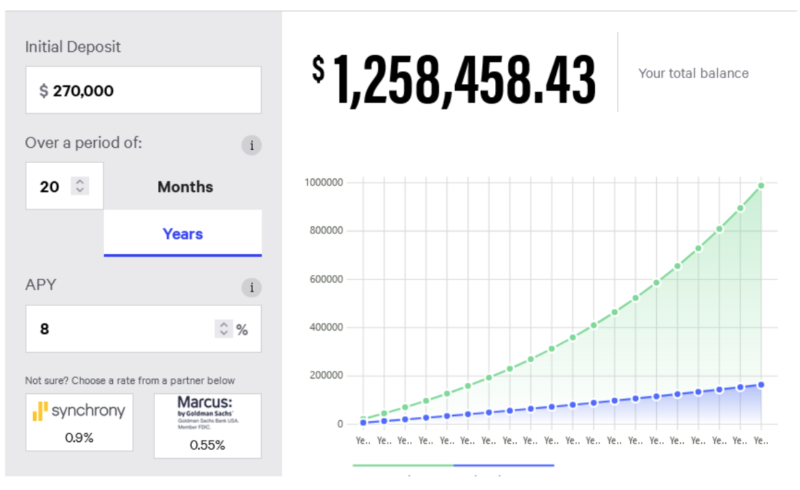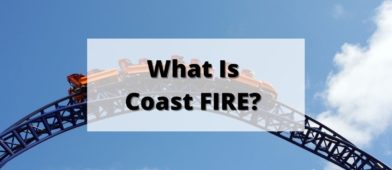The Internet is awash with a financial concept commonly known as FIRE. That’s an abbreviation for financial independence, retire early. And while it sometimes presents as a single financial strategy, there are several. One of them is Lean FIRE. But what is Lean FIRE all about?
Before we get into the answer to that question, let’s first recap exactly what FIRE is and the different types of FIRE that have emerged over the years.
Table of Contents
FIRE 101
A full-blown FIRE movement is dedicated to achieving financial independence, early retirement, or both. At its most basic level, achieving FIRE enables you to quit your job and spend the rest of your life living on the income generated by your investment portfolio. Who wouldn’t want that, right?
But there is, of course, a cost to reaching FIRE, and that’s building a large enough investment portfolio to cover your living expenses.
It’s not an exaggeration to say the entire concept of FIRE rests on your success in building that investment portfolio. That will require many years of living on less than you earn and saving more of your income than you ever thought possible.
How much will you need to accumulate to reach FIRE?
The general rule is to accumulate a portfolio that’s 25 times more than your current living expenses.
For example, let’s say your current annual living expenses are $50,000. To achieve FIRE, you will need to build a portfolio of $1.25 million. That’s $50,000 X 25.
FIRE adherents base the multiplier of 25 on the safe withdrawal rate, which suggests that you can safely withdraw 4% of your portfolio each year without ever running out of money.
Since updated, the safe withdrawal rate was the focus of a 1998 study – commonly referred to as the Trinity Study. Specifically, the study showed that an annual withdrawal rate of between 3% and 4% has a high probability of lasting for at least 30 years before the portfolio is depleted.
The reason for the multiplier of 25 is that it’s the equivalent of a 4% annual withdrawal. Taking the example above of a portfolio worth $1.25 million, generating $50,000 in yearly income, you’ll arrive at the same result if you multiply $1.25 million by 4%.
FIRE Portfolios and Stocks
There’s another essential component to the safe withdrawal rate: To make 4% annual withdrawals, you’ll need to earn a return above 4%, which will require a portfolio heavily slanted toward stocks.
Supplemented by a smaller quantity of bonds, this portfolio should deliver an average annual return of around 7% or 8%. By withdrawing 4% per year, the remaining earnings will stay in the portfolio and keep it even with inflation.
The safe withdrawal rate is well supported, but it’s not entirely perfect either. In years when stocks decline, and you continue to make withdrawals to pay for living expenses, the portfolio will draw down more quickly.
The flipside is that in years when stock returns are higher than average, your portfolio will make up for the heavy losses during the declines.
Now that you have a basic understanding of the financial side of FIRE let’s look at the variations that have developed over the years.
How Many Versions of FIRE Exist?
The only way to fully understand Lean FIRE is to compare it to the other FIRE versions. Each has its unique outcome and portfolio size requirements. If you can’t reach one, you might make another.
There are five primary variations, including Lean FIRE. Here’s a summary of the other four:
1. Regular FIRE
This version aims to build a portfolio large enough to cover your current living expenses. Essentially, using the example we demonstrated above, if you need $50,000 per year to live, you’ll need a portfolio of $1.25 million.
2. Fat FIRE
Fat FIRE is sometimes called the “TV version” of FIRE. The goal is to live very comfortably off of your investments – luxury FIRE, so to speak. It could mean building a portfolio large enough to sustain a $100,000 annual income, even if you usually spend $50,000 per year. $100,000 per year will require a $2.5 million portfolio, a huge savings commitment. We’ll do a deeper dive on Fat FIRE later in the article.
3. Coast FIRE
This variation is described as “Coast” because it involves reaching a specific portfolio size early on and then coasting to your goal. Once you reach your goal, you no longer need to save. Instead, use time and compounding to allow your portfolio to grow to its ultimate size requirement.
For example, let’s say you’re 25 years old and want to reach Regular FIRE by age 50. If you can build a portfolio of $270,000 by age 30 and invest it at an average rate of 8%, you’ll have over $1.25 million by the time you’re 50 – with no additional contributions after age 30.
We calculated the investment portfolio target using the Bankrate CD calculator:

4. Barista FIRE
Barista FIRE is somewhat of a hybrid and most closely related to Lean FIRE. You’ll build a portfolio that will cover most of your living expenses, but you’ll continue to work to supplement your income. The difference is that the work you’ll do will likely be in something you enjoy, even if it pays less money than you’re earning now.
And of course, the other version is Lean FIRE, which will be the subject of most of the rest of this article.
What Is Lean FIRE?
Now for the primary subject of this article – Lean FIRE. Like the other FIRE versions, Lean FIRE relies heavily on the safe withdrawal rate and the accumulation of an extensive investment portfolio. But the main difference is that this version of FIRE has a much stronger emphasis on frugality.
Lean FIRE is a variation that works incredibly well for people who can live on less than the average person does. For example, though you may earn $50,000 per year, you’ll only need $30,000 to cover your living expenses in a typical year.
The frugality angle provides two advantages:
- Because you live on far less than you earn, you’ll be able to dedicate more income to building your portfolio, and
- You’ll need less income in FIRE, which means a smaller portfolio.
If you only need $30,000 to live, you can achieve Lean FIRE with a portfolio of $750,000 – well below the portfolio size required for the other types of FIRE.
Even if you haven’t been a frugal person up to this point, you can pursue Lean FIRE by adopting frugality. That will require cutting expenses dramatically, often the big ones like housing and transportation. But if you can make those cuts and still live comfortably, this version of FIRE will be well worth the effort.
Note: Lean FIRE uses your investment portfolio to cover primary living expenses, including housing, transportation, healthcare, and food. Though you will have achieved Lean FIRE if you have enough portfolio income to cover these expenses, you may need to continue working a part-time job or side hustle to cover non-essential costs, like travel, entertainment, gifts, etc.
Put another way, while Lean FIRE will lead to a reliable measure of financial independence, it’s not a guarantee of full retirement for life, nor is that necessarily the goal.
What Is Fat FIRE?
Fat FIRE is the version of FIRE where not only do you achieve financial independence and retire early, but you do it in style. That is, you plan to live at a level that’s well above that of the average person or household. Each person pursuing Fat FIRE will need to determine what that life will look like and make a reasonable estimate of what it will cost.
But as an example, let’s say you decide that you want to live at an income level that’s twice the national average. According to the U.S. Census Bureau, the median household income in 2020 was $67,521. That means your income goal will need to be about $135,000 ($67,521 X 2).
To achieve the required portfolio size, you’ll need to multiply that income level by 25. The portfolio required to produce that income will be $3,375,000.
That’s a lot more than the $1.25 million you will need for Regular FIRE and several times higher than the $750,000 we used for Lean FIRE.
Naturally, that will take more years and a much higher level of savings to accomplish. For this reason, Fat FIRE will work best for those who already have a high income, certainly well above $100,000 per year.
But if you can achieve it, you’ll be living your Lifestyles of the Rich and Famous. But to be fair, this version of FIRE will be least likely for most people. So don’t sweat it if it seems to be out of reach.
Lean FIRE vs. Fat FIRE
The table below provides a side-by-side comparison of Lean FIRE vs. Fat FIRE:
| Requirement / Outcome | Lean FIRE | Fat FIRE |
| FIRE Version | “Light” | Full |
| Portfolio Size | $750,000 to $1.25 million | $2.5 million and above |
| Financial Independence | Largely, but not completely | Yes |
| Full Retirement | Not likely | Yes |
| Frugality Requirement | Yes, both during accumulation and after reaching FIRE | Yes, during accumulation, but not after reaching FIRE |
| Lifestyle Options After Achieving FIRE | Relatively limited | Nearly unlimited |
| Primary Advantages | General level of financial independence; takes less time and money to accomplish | Once you reach FIRE, you’re financially independent and living well, with no need to work again. |
| Primary Disadvantages | May not eliminate the need to work, inflation, stock market crashes, health insurance. | Inflation, stock market crashes, health insurance |
| Best For | Lower/middle income individuals and households who lead very frugal lives | Higher-income individuals and families with more investable income |
Perhaps the most significant difference between Lean FIRE and Fat FIRE is in the dimensions of each.
Lean FIRE is a reduced version of FIRE, requiring a much smaller investment portfolio but a very high and permanent level of frugal living. It’s also unlikely to lead to a full version of retirement.
Fat FIRE is the deluxe version of FIRE, requiring a much larger investment portfolio. That will almost certainly require strict frugality during the portfolio acquisition phase. But once you reach your goal, you’ll be free to live the life of your dreams.
Lean FIRE Pros & Cons
Pros:
- Requires a much smaller portfolio than other FIRE versions.
- Accomplished with less money and in a shorter time frame.
- Covers major living expenses.
- You’ll only need to work to cover the luxuries you desire.
- Maintaining some form of employment can provide some insulation against inflation and stock market crashes.
- Ability to choose work that you like, even if it doesn’t pay a living wage.
- Once you reach Lean FIRE status, you can continue on to Regular FIRE, or even Fat FIRE.
Cons:
- Provides financial independence but may not enable you to fully retire.
- May require a drastic reduction in your current lifestyle.
- Financial stress is greatly reduced, but not completely eliminated.
- Like all forms of FIRE, it’s more difficult to attain with a very low income.
Is Lean FIRE Right for Me?
Lean FIRE won’t be anything close to the full version of FIRE for many people. That’s certainly true if your ultimate goal is full retirement. But it does provide a considerable measure of financial independence, generally in less time than it will take for other FIRE versions.
And because the emphasis is primarily on frugality, it’s the better choice for individuals and households with average (or less) income. But once you do achieve it, you’ll have less stress and more options than you ever thought possible.



